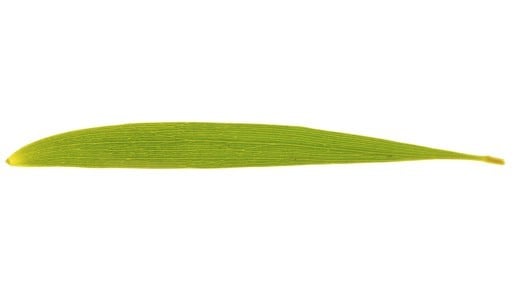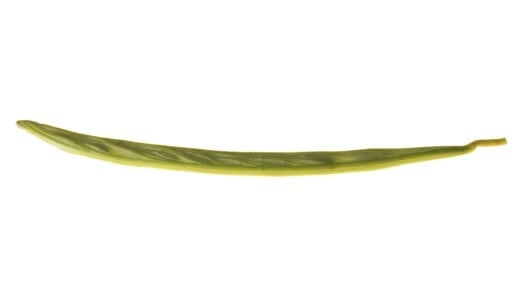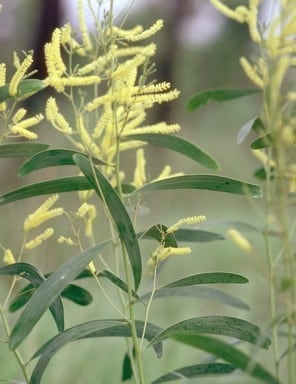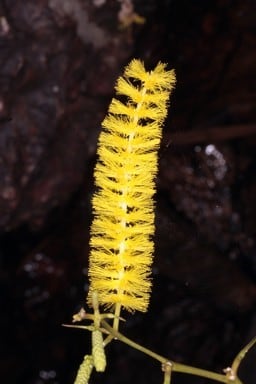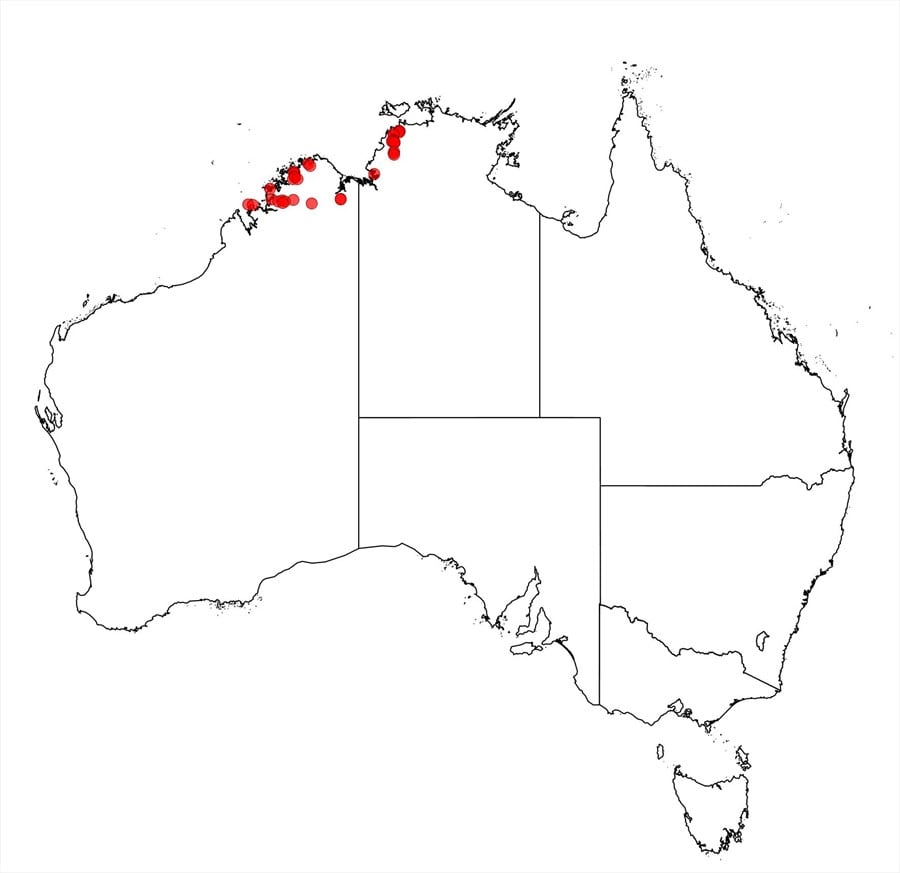Acacia oligoneura F.Muell.
WATTLE
Acacias of Australia
Family
Fabaceae
Distribution
Known from the Kimberley region of W.A. and from Noonamah (S of Darwin) to the Litchfield–Daly River area and the Victoria River area of north-western N.T.
Description
Shrub to 2 m high, many-stemmed, resinous. Branchlets angular, flattened towards apices, greenish yellow or yellow to pale brown, glabrous, often scurfy and with numerous to scattered reddish brown to clear granules. Phyllodes very narrowly oblanceolate (-elliptic), straight or slightly curved, 9–18 (–20) cm long, (7–) 8.5–21 mm wide, chartaceous to thinly coriaceous, light olive-green, glabrous, with yellowish nerves, with lower 2 of the 3 or 4 prominent longitudinal nerves that are rarely confluent with upper or lower margin near base; nerves (2–) 3–4 (–5) per mm, moderately to strongly anastomosing; gland 0 (–1) mm above pulvinus. Peduncles 2.5–8 mm long. Spikes 2–4 (–8) in axils, 1–4.2 cm long, light golden or bright yellow. Flowers 5-merous; calyx cupular, membranous, 0.5–0.7 mm long, dissected to 1/5–1/2, glabrous or with reddish brown glandular hairs (granules) towards sepal apices; corolla 1–1.5 mm long, dissected to 1/2 or more. Pods narrowly oblanceolate-linear, basally narrowed, flat, 5–8.5 cm long, 3–7.5 mm wide, woody, prominently obliquely to longitudinally nerved, glabrous, opening elastically from hooked apex. Seeds oblique, ±elliptic or oblong, 4.7–5.5 mm long, mid-brown; funicle-aril narrowly conical.
Phenology
Flowers Jan.–May, fide C.R.Dunlop et al., Fl. Darwin Region 2: 16 (1995).
Habitat
Grows in woodland, on rocky slopes, in laterite or red clay over basalt (Mitchell Plateau).
Specimens
W.A.: about 0.5 km N of CRA mining camp, Mitchell Plateau, B.R.Maslin 5084 (BRI, NSW, PERTH); 0.5 km N of mining campsite, Mitchell Plateau, N Kimberley, K.F.Kenneally 8168 (BRI, PERTH). N.T.: Litchfield Natl Park, track to Lost City, I.D.Cowie 5372 & L.Taylor (BRI n.v., DNA n.v., PERTH n.v.); Daly River road, G.Wightman 345 (DNA, PERTH).
Notes
Dunlop et al., Fl. Darwin Region 2: 16 (1995), report that thin stems arise from a woody rootstock after fire.
Branchlets and phyllodes usually with reddish brown granules which also occur on bracteole laminae and sepal apices. Related to A. oncinocarpa which is distinguished usually by more elliptic phyllodes (broadest near middle) with more closely spaced, less anastomosing longitudinal nerves, and by paler inflorescences. Also seemingly related to synantha.
FOA Reference
Data derived from Flora of Australia Volumes 11A (2001), 11B (2001) and 12 (1998), products of ABRS, ©Commonwealth of Australia
Author
Dr M.D.Tindale and Dr P.G.Kodela with the assistance of M.Bedward, S.J.Davies, C.Herscovitch, D.A.Keith and/or D.A.Morrison
Minor edits by J.Rogers
This identification key and fact sheets are available as a mobile application:
URL: https://apps.lucidcentral.org/wattle/
© Copyright 2018. All rights reserved.

